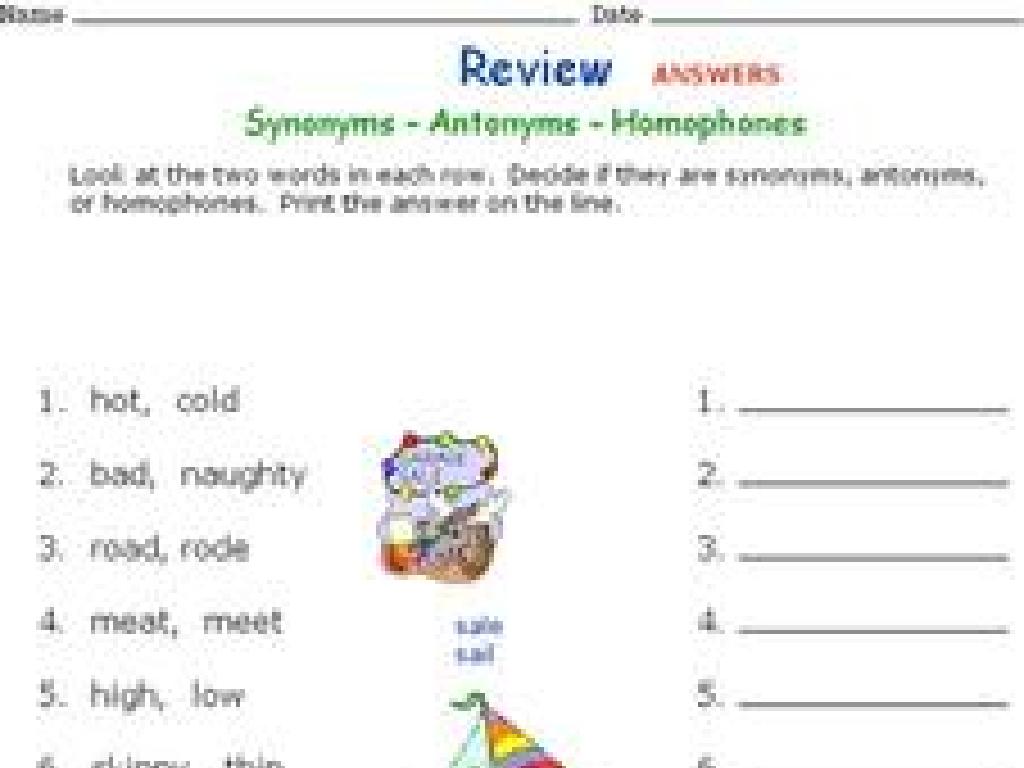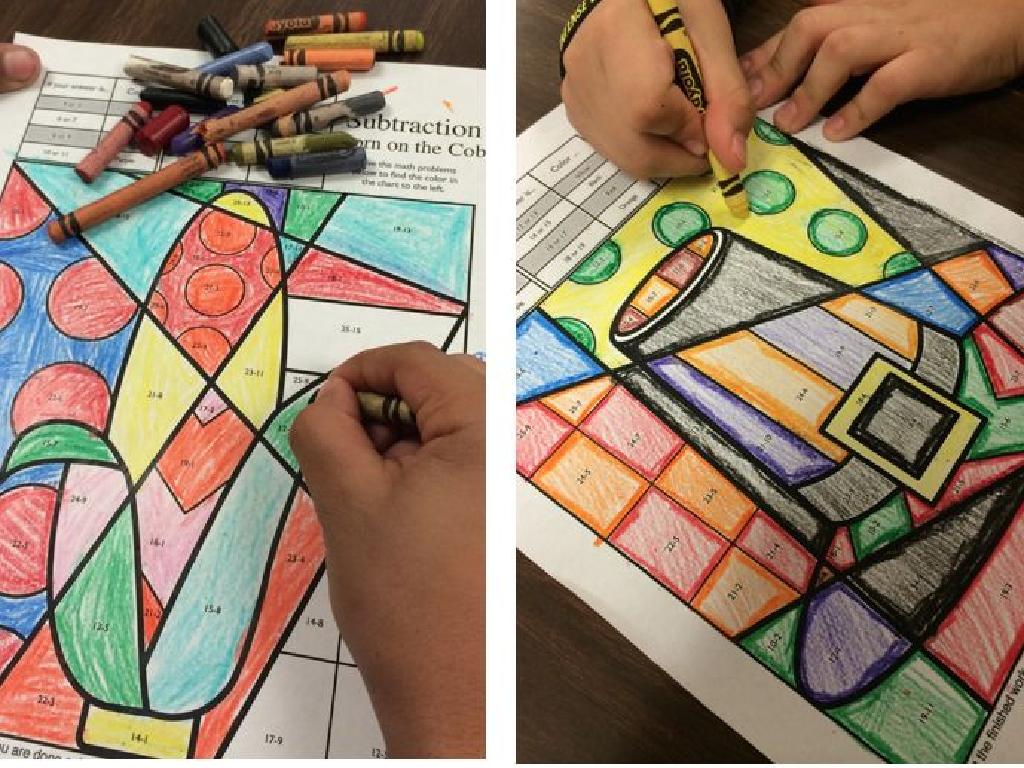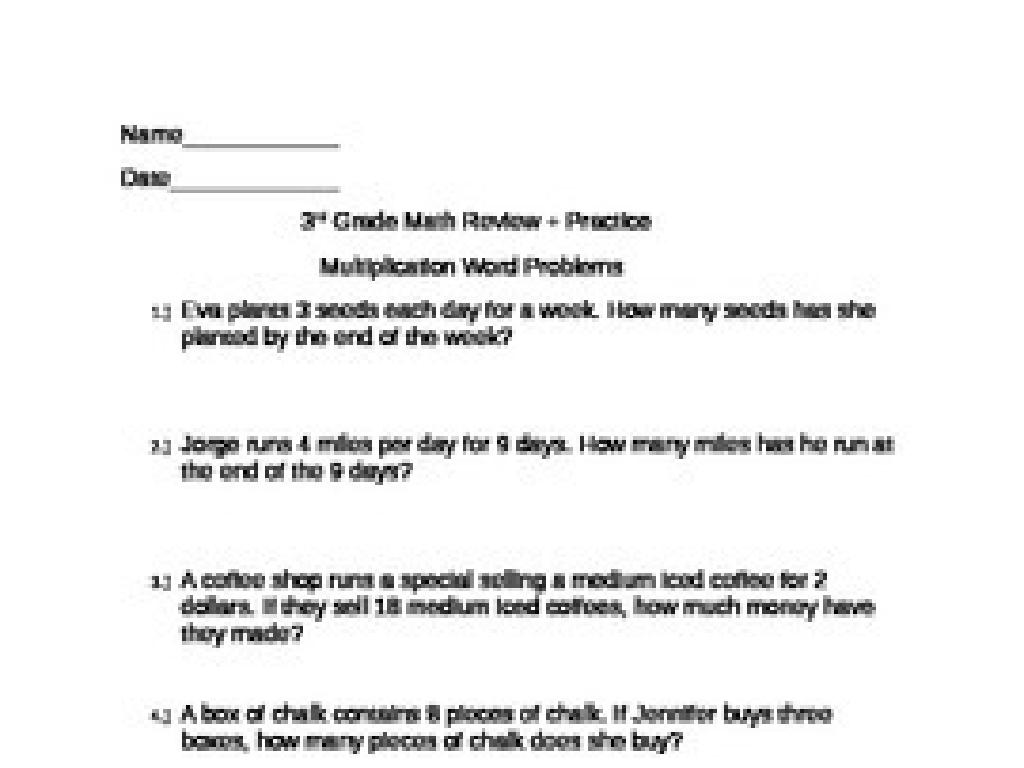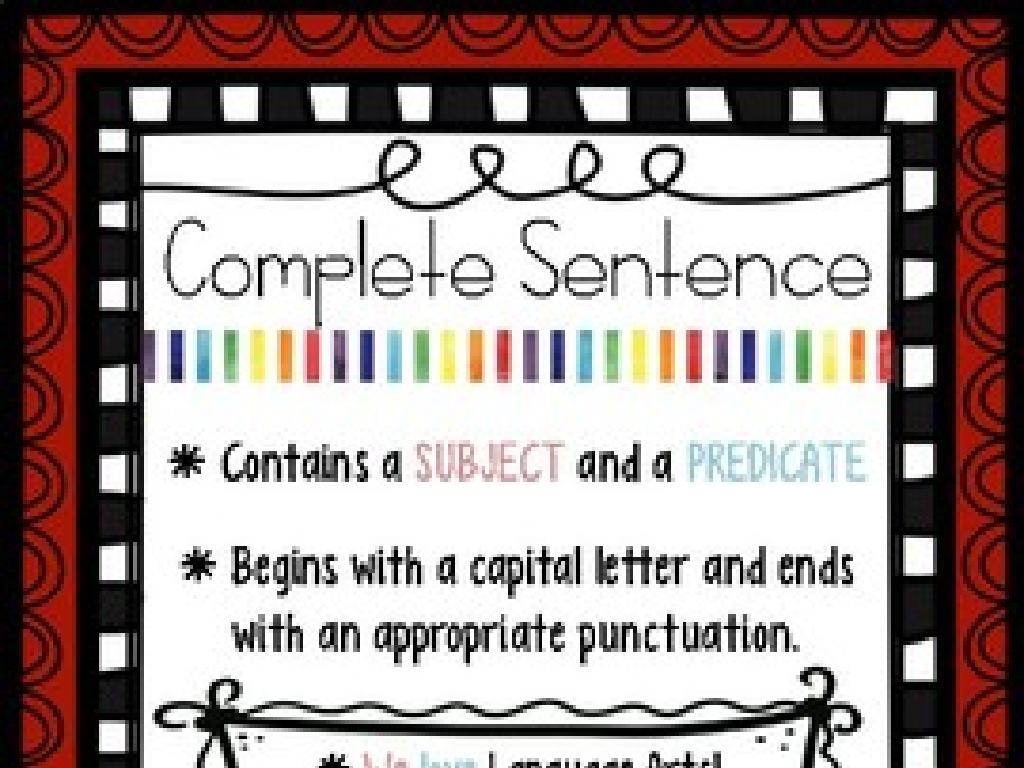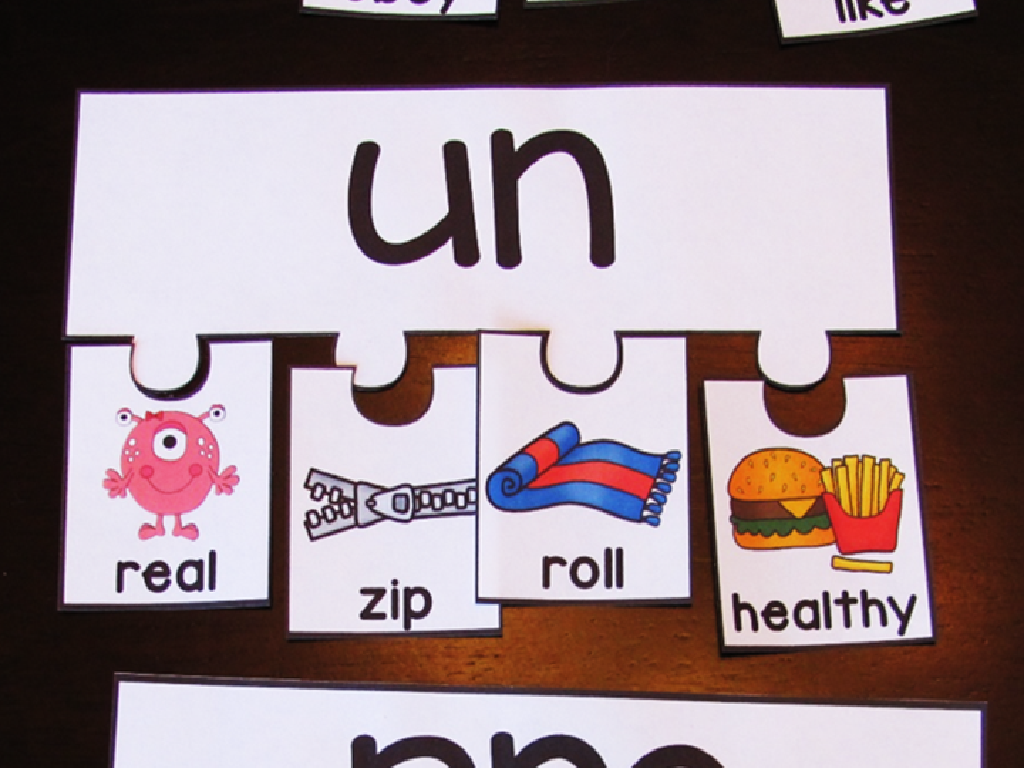Identify Pronouns And Their Antecedents
Subject: Language arts
Grade: Seventh grade
Topic: Pronouns And Antecedents
Please LOG IN to download the presentation. Access is available to registered users only.
View More Content
Welcome to Pronouns and Antecedents!
– Define pronouns
– Pronouns are words that replace nouns, e.g., he, she, it.
– Explain antecedents
– Antecedents are the nouns pronouns refer to.
– Pronoun-antecedent agreement
– Pronouns must match their antecedents in number and gender.
– Significance of agreement
– Proper agreement avoids confusion in sentences.
|
This slide introduces the concept of pronouns and their antecedents, which are essential components of English grammar. Pronouns are used to avoid repetition and make sentences clearer, but they must correspond correctly to the antecedents they replace in terms of number (singular or plural) and gender. Understanding this agreement is crucial for students to construct coherent and unambiguous sentences. Provide examples to illustrate correct and incorrect usage, and emphasize the importance of this agreement in both spoken and written communication. Encourage students to practice by identifying pronouns and their antecedents in sentences and ensuring they agree.
Understanding Pronouns
– Define a pronoun
– A word that takes the place of a noun
– Examples of pronouns
– ‘He’, ‘she’, ‘it’, ‘they’ replace specific names
– Pronouns prevent repetition
– They help avoid saying the same nouns over and over
– Practice identifying pronouns
|
This slide introduces the concept of pronouns, which are fundamental in constructing clear and concise sentences. A pronoun is a word that substitutes for a noun or noun phrase. Common examples include ‘he’, ‘she’, ‘it’, ‘they’, etc. By using pronouns, we can avoid unnecessary repetition in our speech and writing, making communication more efficient. Instruct students to practice identifying pronouns in sentences and to understand how they relate to the nouns they replace, known as antecedents. This will prepare them for the next topic, which is identifying antecedents of pronouns.
Understanding Antecedents in Sentences
– Define an antecedent
– An antecedent is a word that a pronoun refers to in a sentence.
– Antecedents replace nouns
– Pronouns like ‘he’, ‘she’, ‘it’, ‘they’ often refer back to antecedents.
– Sentence examples
– Example: In ‘Lisa found her coat’, ‘Lisa’ is the antecedent of ‘her’.
– Practice identifying antecedents
|
This slide introduces the concept of antecedents, which are essential for understanding pronoun usage. An antecedent is the noun or noun phrase that a pronoun refers to or replaces in a sentence. It’s important for students to recognize that pronouns take the place of nouns to avoid repetition and make sentences clearer. Provide examples where antecedents are easy to identify, and then move on to more complex sentences. Encourage students to practice by finding antecedents in their reading or in provided sentences. This will prepare them for identifying pronouns and their antecedents in various contexts.
Matching Pronouns and Antecedents
– Pronouns agree with antecedents
– They must match in number (singular/plural) and gender (male/female/neuter).
– Singular antecedents and pronouns
– Use ‘he’ or ‘she’ for ‘the student’ if only one student is meant.
– Plural antecedents and pronouns
– Use ‘they’ for ‘the students’ to show there is more than one.
– Practice with examples
|
This slide focuses on the fundamental rule that pronouns must match their antecedents in both number and gender. Singular antecedents require singular pronouns, while plural antecedents require plural pronouns. For example, if the antecedent is ‘the teacher’ (singular), the pronoun should be ‘he’ or ‘she’ (also singular), not ‘they’ (plural). Conversely, if the antecedent is ‘the teachers’ (plural), the correct pronoun is ‘they’ (plural). It’s crucial for students to practice this to avoid common mistakes in their writing. Provide examples and exercises where students identify antecedents and select the appropriate pronouns, ensuring they understand the concept of agreement in grammar.
Identifying Pronouns and Antecedents
– Finding pronouns in sentences
– Pronouns replace nouns: he, she, it, they, etc.
– Determining pronouns’ antecedents
– Antecedents are the nouns pronouns refer to
– Practice with examples
– Use sentences to locate and match pronouns and antecedents
– Class activity: Identify pronouns
– Find and match pronouns to their antecedents in a given paragraph
|
This slide introduces the concept of pronouns and their antecedents, which are essential components of grammar in language arts. Start by explaining that a pronoun is a word used to replace a noun, which avoids repetition and makes sentences smoother. Then, discuss how every pronoun has an antecedent, the noun it replaces, and how to find it in a sentence. Provide clear examples to illustrate this relationship. For the class activity, prepare a worksheet with sentences or short paragraphs where students will identify pronouns and draw lines to their corresponding antecedents. This will help reinforce their understanding through practical application. Offer a variety of examples to cater to different learning paces and ensure that every student grasps the concept.
Let’s Practice Together: Pronouns and Antecedents
– Identify pronouns and antecedents
– Find the pronoun and ask ‘Who or What does this refer to?’
– Group activity: create clear sentences
– Work in groups to write sentences with pronouns and their antecedents
– Share your sentences with the class
– Each group will present their sentences
– Discuss the examples together
– Discuss how the pronouns and antecedents work in each sentence
|
This slide is for a class activity focused on identifying pronouns and their antecedents. Begin by explaining that a pronoun is a word that takes the place of a noun, and the antecedent is the noun the pronoun refers to. Instruct students to work in groups to create their own sentences that include both pronouns and antecedents. Afterward, have each group share their sentences with the class, and facilitate a discussion on how the pronouns and antecedents relate to each other in each example. This activity will help students understand the relationship between pronouns and antecedents, improving their ability to use them correctly in writing. Provide guidance and examples as needed, and ensure that each student participates in the discussion.
Avoiding Common Pronoun Mistakes
– Pronoun-antecedent agreement
– Ensure pronouns match their antecedents in number and gender
– Avoid vague pronoun references
– Pronouns should clearly refer to a specific noun
– Ensure pronoun clarity
– Rewrite sentences for clear pronoun usage
– Practice correct usage
|
This slide addresses common errors students make with pronouns and their antecedents. Emphasize the importance of matching pronouns with their antecedents in both number (singular or plural) and gender. Highlight how vague pronouns can confuse readers about which noun the pronoun is referring to. Provide examples to illustrate how to rewrite sentences to improve clarity, such as replacing a vague pronoun with the noun it represents. Encourage students to practice by identifying errors in sample sentences and correcting them. This will help reinforce their understanding and application of pronoun-antecedent agreement rules.
Class Activity: Pronoun-Antecedent Hunt
– Find pronoun-antecedent errors
– Look for mismatched pronouns and their nouns
– Pair up for peer review
– Exchange papers and check for clarity and correctness
– Discuss the importance of agreement
– Why does pronoun-antecedent agreement matter?
– Correct errors in a paragraph
– Apply what you’ve learned to improve writing
|
This activity is designed to help students understand the concept of pronoun-antecedent agreement through practical application. Begin by explaining that an antecedent is the noun that a pronoun replaces, and they must agree in number and gender. Provide a paragraph with intentional errors for students to work on. Students should work in pairs to find and correct errors, fostering collaborative learning. After the activity, lead a class discussion on why pronoun-antecedent agreement is crucial for clarity in writing. Possible activities: 1) Correcting sentences from a worksheet, 2) Writing their own sentences with errors for peers to correct, 3) Finding errors in a text excerpt, 4) Creating a poster with rules for agreement, 5) Role-playing with sentences to highlight the confusion that arises from incorrect usage.
Wrapping Up: Pronouns and Antecedents
– Review of pronouns and antecedents
– Homework: Craft a short story
– Include various pronouns and their clear antecedents
– Ensure pronoun-antecedent agreement
– Check that pronouns match their antecedents in number and gender
– Remember: Practice is key!
|
As we conclude today’s lesson, recap the key points about pronouns and their antecedents. For homework, students are tasked with writing a short story that demonstrates their understanding of pronoun-antecedent agreement. This exercise will help solidify their grasp of the concept by applying it in a creative context. Remind students that consistent practice is essential for mastering language arts skills. In the next class, we can discuss some of the stories and highlight examples of correct usage, which will reinforce learning and provide recognition for their efforts.

